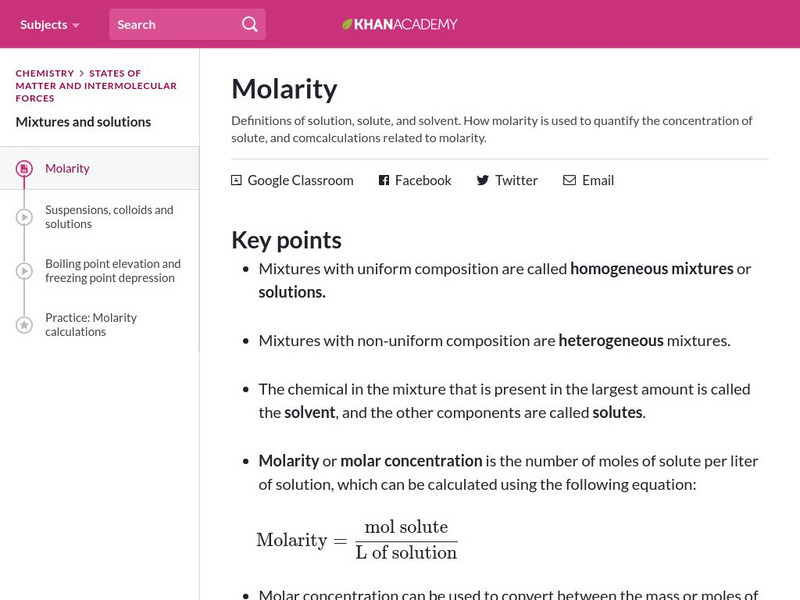Other
English Montreal School: Chemical vs. Physical Changes: Elements vs. Compounds
A laboratory experiment where students classify matter into a homogenous mixture, heterogeneous mixture, solution, or pure substance. Also students will test for physical and chemical changes.
Khan Academy
Khan Academy: Molarity
Learn the definitions of a solution, solute, and solvent. Understand how molarity is used to quantify the concentration of solute, and comcalculations related to molarity.
Ducksters
Ducksters: Chemistry for Kids: Chemical Mixtures
Explore all about chemical mixtures on this site including solutions, alloys, suspensions, colloids, dissolving, examples, and facts.
Other
Science House: Ice Cream
Experiment shows students how to use the lowered freezing point of water to chill another mixture (ice cream) to the solid state. Teacher's notes provide background information.
Open Curriculum
Open Curriculum: Matter
Students will be able to describe elements and compounds, and explain how mixtures differ from compounds.
Science Struck
Science Struck: Explanation of Tyndall Effect With Labeled Diagram
Explains what the Tyndall Effect is and uses a diagram to model its impact on two different mixtures. Includes causes, examples, a look at suspensions and solutions, and an experiment to try.
CK-12 Foundation
Ck 12: Fifth Grade Science: Physical Science: Rate of Dissolving
[Free Registration/Login may be required to access all resource tools.] Discusses the rate of dissolving and the factors that affect it.
ClassFlow
Class Flow: Comparing and Contrasting Matter
[Free Registration/Login Required] This flipchart is a guided activity to help students compare different types of matter: atoms and molecules, elements and compounds, mixtures and solutions. It corresponds to Virginia science SOL 5.4.







